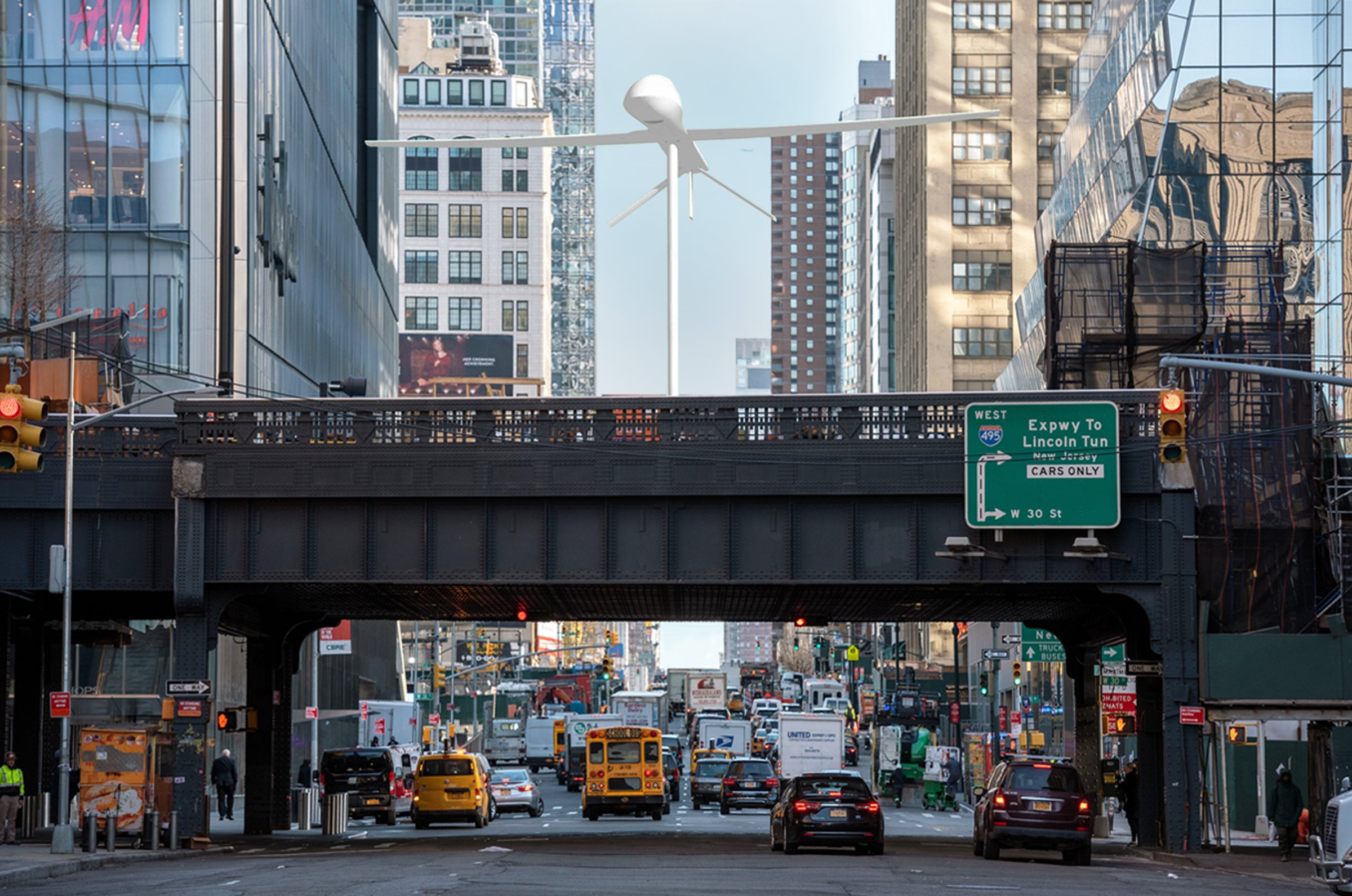
An ominous but easily missable new sculpture will appear 25 feet over the High Line next month. Sam Durant’s fiberglass kinetic sculpture of a Predator drone will be more or less visible depending on the wind, time of day, and light conditions. Sometimes it will blend into the clouds altogether.
The artist’s stripped-down drone looks like a sleekly abstract Modernist sculpture, and does not include the remote-controlled military aircraft’s cameras, weapons, or landing gear. But with a 48-foot wingspan, it is the same size as the real deal.
“For Sam, the goal is to make visible in America the drone warfare that this country carries out against countries very far away,” Cecilia Alemani, director and chief curator of High Line Art, told the New York Times.
The U.S. military began using Predator drones in 1995. It has used them to conduct reconnaissance and airstrikes in Afghanistan, Iraq, Libya, Pakistan, Syria, Somalia, Yemen, and other countries in the decades since.
Sam Durant, Untitled (drone), rendering. Photo courtesy of High Line Art.
“We can pretty much say that there’s never been a just war,” Durant said in a video produced by High Line Art. “Maybe people are not aware of the drones and just how ubiquitous they are in other parts of the world.” The sculpture, which rotates like a weathervane, will be on view for 18 months,
“Untitled (drone) is meant to animate the question about the use of drones, surveillance, and targeted killings in places far and near, and whether as a society we agree with and want to continue these practices,” Durant said in a statement.
Durant’s work is the second commission for the High Line Plinth, a dedicated space for monumental contemporary art that was first announced in 2017 and inspired by the “Fourth Plinth” in London’s Trafalgar Square. Durant’s proposal was one of 12 finalists unveiled that year, but his selection remained under wraps until now.
The plinth’s inaugural work, Brick House by Simone Leigh, has been on view since 2019, when the last section of the old train tracks that make up the High Line first opened. (Governor Andrew Cuomo recently announced a two-pronged expansion of the elevated park.)
Leigh has since been tapped to represent the U.S. at the Venice Biennale in 2022, for which Alemani is director of the international exhibition.
Simone Leigh, Brick House at the Spur, the last section of the original structure of the High Line to be converted into public space in New York. Photo by Timothy A. Clary/AFP/Getty Images.
Last summer, the High Line offered the public a chance to weigh in on 80 proposals for the third and fourth plinth commissions, set to appear in 2022 and 2024. The 12 artists still in the running include Iván Argote, Nick Cave, and Teresita Fernández.
Untitled (drone) is Durant’s first major public sculpture since a controversy erupted after Minneapolis’s Walker Art Center acquired his piece Scaffold (2012) in 2017. The work, which had been exhibited without issue at Documenta in Germany, served as a critique of capital punishment in the U.S. The sculpture was a composite of the gallows used in six high-profile executions, including the largest in the nation’s history, of 38 Dakota men, in Mankato, Minnesota.
Sam Durant, Scaffold. Courtesy of Sarah Cascone.
The tribe, which was not consulted ahead of the work’s acquisition, objected to the display and Durant ultimately handed the sculpture over to the tribe to be buried.
“Having my work seen by the Dakota community, whose struggle with historical injustice it was meant to support, as an attack on them was deeply painful,” Durant told the Times. “They wanted to perform a ritual healing process and that was, in my eyes, the most appropriate way to continue with the work.